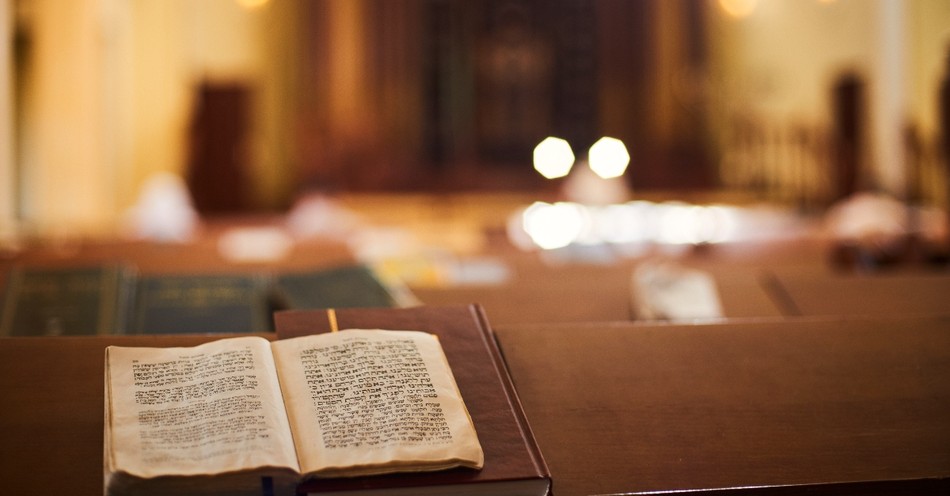The first Temple in Jerusalem was extremely significant to the people of Israel, the kings of Israel, and God Himself. While in the modern day it can be hard to understand the significance of a Temple so many thousands of years ago, it is vital that we understand the significance of the first Temple in Jerusalem.
The History of the First Temple
Talks of building a Temple for God started occurring a while before the Temple was actually built. David had wanted to build God a dwelling place, but God told David that He has never remained in a dwelling place made by human hands (1 Chronicles 17:1-10).
Even though King David wanted to build a Temple for God, God told David that David’s son would build the Temple. 1 Chronicles 17:10b-14 tells us,
“I declare to you that the Lord will build a house for you: When your days are over and you go to be with your ancestors, I will raise up your offspring to succeed you, one of your own sons, and I will establish his kingdom. He is the one who will build a house for me, and I will establish his throne forever. I will be his father, and he will be my son. I will never take my love away from him, as I took it away from your predecessor. I will set him over my house and my kingdom forever; his throne will be established forever.”
David’s son, Solomon, was the one to build the first Temple of Jerusalem for God once he became king over Israel. This moment was an extraordinary time in history for the Israelites.
By God having a Temple, it meant the Lord was going to live among the Israelites in His Temple. The building of the Temple was extravagant and was done under specific instructions and designs (1 Kings 6).
The Bible tells us Solomon “lined its interior walls with cedar boards, paneling them from the floor of the temple to the ceiling, and covered the floor of the temple with planks of juniper. He partitioned off 20 cubits at the rear of the temple with cedar boards from floor to ceiling to form within the temple an inner sanctuary, the Most Holy Place. The main hall in front of this room was 40 cubits long. The inside of the temple was cedar, carved with gourds and open flowers. Everything was cedar; no stone was to be seen” (1 Kings 6:15-18).
Within the Temple, Solomon also built an inner sanctuary for the Lord.
The inner sanctuary was to keep the ark of the covenant (1 Kings 6:19).
The Bible describes the inner sanctuary as “twenty cubits long, twenty wide and twenty high. He overlaid the inside with pure gold, and he also overlaid the altar of cedar. Solomon covered the inside of the temple with pure gold, and he extended gold chains across the front of the inner sanctuary, which was overlaid with gold. So, he overlaid the whole interior with gold. He also overlaid with gold the altar that belonged to the inner sanctuary” (1 Kings 6:20-22).
All in all, the Temple was very magnificent and impressive.
In addition to all of these elaborate features, Solomon also had a pair of cherubs carved for the inner sanctuary (1 Kings 6:23-28). In both the inner rooms and the outer rooms, Solomon covered the floors of the Temple with gold (1 Kings 6:29-30).
In building the Temple for the Lord, Solomon was completely dedicated to serving God and making sure the Temple would be pleasing to the Creator of the world. The main significance of the first Temple of Jerusalem was that it attested to God’s glory.
King Solomon built the Temple to bring glory to God’s Name. Out of deep love and respect, Solomon ordered for the Temple to be built and he overlooked the building of the Temple to ensure it was built correctly for God’s great Name.
Offering of Sacrifices
Another significance of the first Temple in Jerusalem is that the Temple was where animals could be taken by the Jews to be offered in sacrifice for their sins. Through the Temple sacrifices, the Jews were able to be forgiven of their sins.
The High Priest of Israel would offer the animal sacrifices on behalf of Israel for forgiveness from the Lord. The Temple was remarkably significant for the Israelites because it meant there was a place, they could go to offer sacrifices as well as a place to go to worship the Lord.
During the extent of the existence of the First Temple before it was destroyed by the Babylonians in 586 B.C., it served as the major place for the Jews to worship, offer sacrifices, and receive forgiveness of their sins.
There was no other place the Jews could go that would serve the same purpose as the first Temple in Jerusalem. The first Temple in Jerusalem was pivotal to their faith.
Connection Between God and Man
The first Temple in Jerusalem was also significant because of the connection it caused between God and man. The Temple made it possible for God and man to commune.
Even though the common layperson could not speak to God face-to-face, they could worship God in the Temple and they could offer sacrifices as an act of receiving forgiveness of sins.
By God dwelling in the Temple, it showed that God was truly dwelling among His people once more as He did in the beginning, although not in the exact same way as He did in the Garden.
God will not dwell with man again until the future events of eschatology, such as during the 1,000-year reign of Christ and throughout the New Heaven and New Earth.
The connection between God and man was confirmed through the building of the first Temple in Jerusalem.
Significance of the First Temple for Us Today
The modern-day significance of the first Temple in Jerusalem is that it causes us to thank God for the goodness He has shown us in the ways that we no longer have to offer sacrifices for our sins or only worship God in one place.
In the modern-day, Jesus’ one sacrifice was sufficient for the sins of the world, and we now can worship God anywhere, anytime.
Hebrews 7:27 tells us, “Unlike the other high priests, he does not need to offer sacrifices day after day, first for his own sins, and then for the sins of the people. He sacrificed for their sins once and for all when he offered himself.”
Furthermore, we can worship God anywhere, anytime now because we worship God in spirit and in truth (John 4:23-24). As modern-day believers, we need to reflect on the astounding changes that Jesus brought about for our faith.
Often, we may think the first Temple does not have any significance for us today, but it really does. It reminds us to be thankful for all that Jesus has done for us and that we don’t have to go and offer a sacrifice each time we commit a sin.
Instead, we can confess our sins to God wherever we are and repent. The Bible tells us that if we confess our sins, we will be forgiven by God (1 John 1:9).
Without the first Temple in Jerusalem and the activities that went on, we would not be able to be nearly as appreciative as we should be for Jesus’ completed work on the cross.
For further reading:
3 Key Lessons from Jesus in the Temple
How Haggai Encouraged the Rebuilding of the Second Temple
What Is the Wisdom of Solomon and Is it in the Bible?
Photo Credit: ©iStock/Getty Images Plus/sandsun




.jpg)